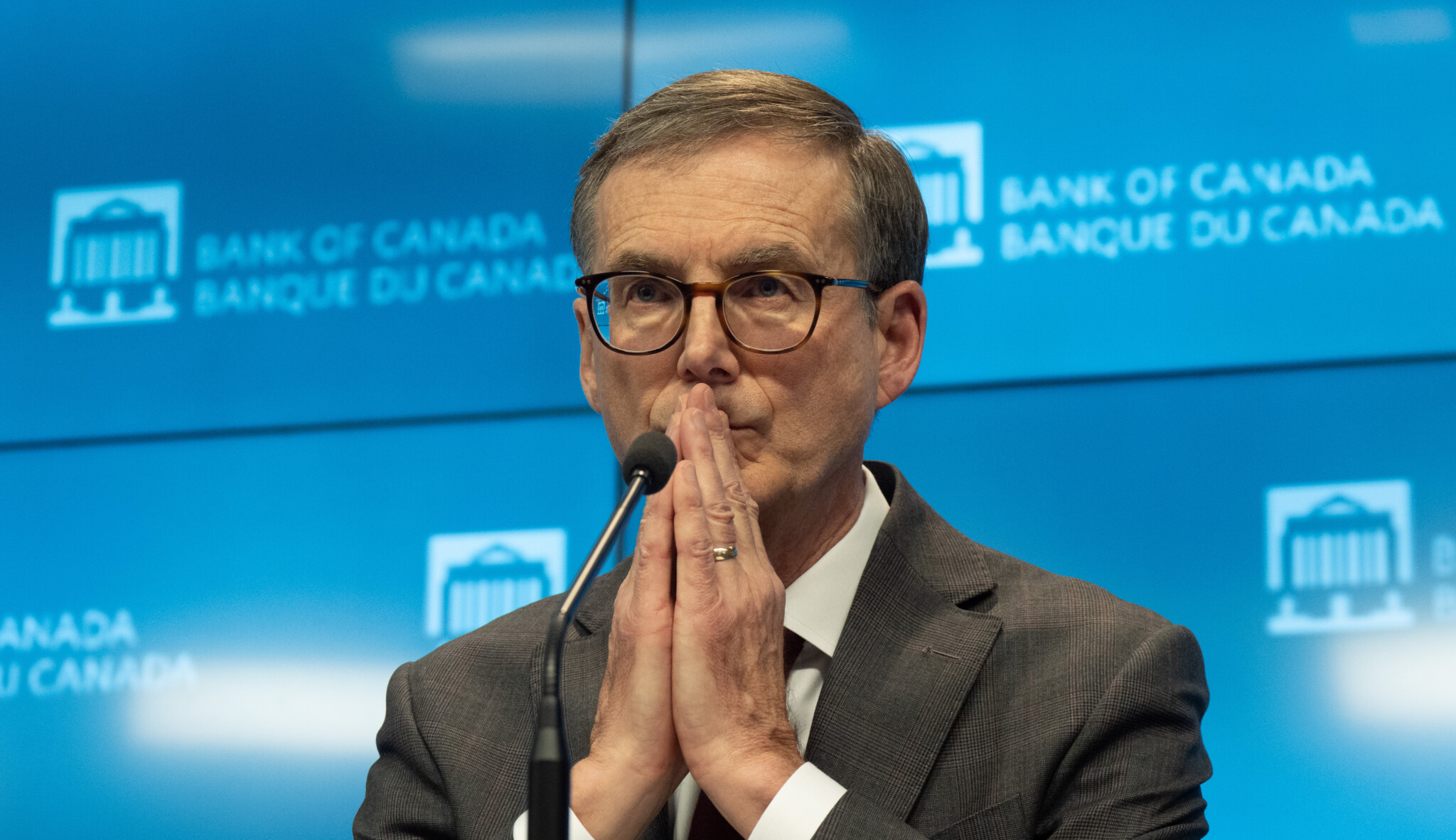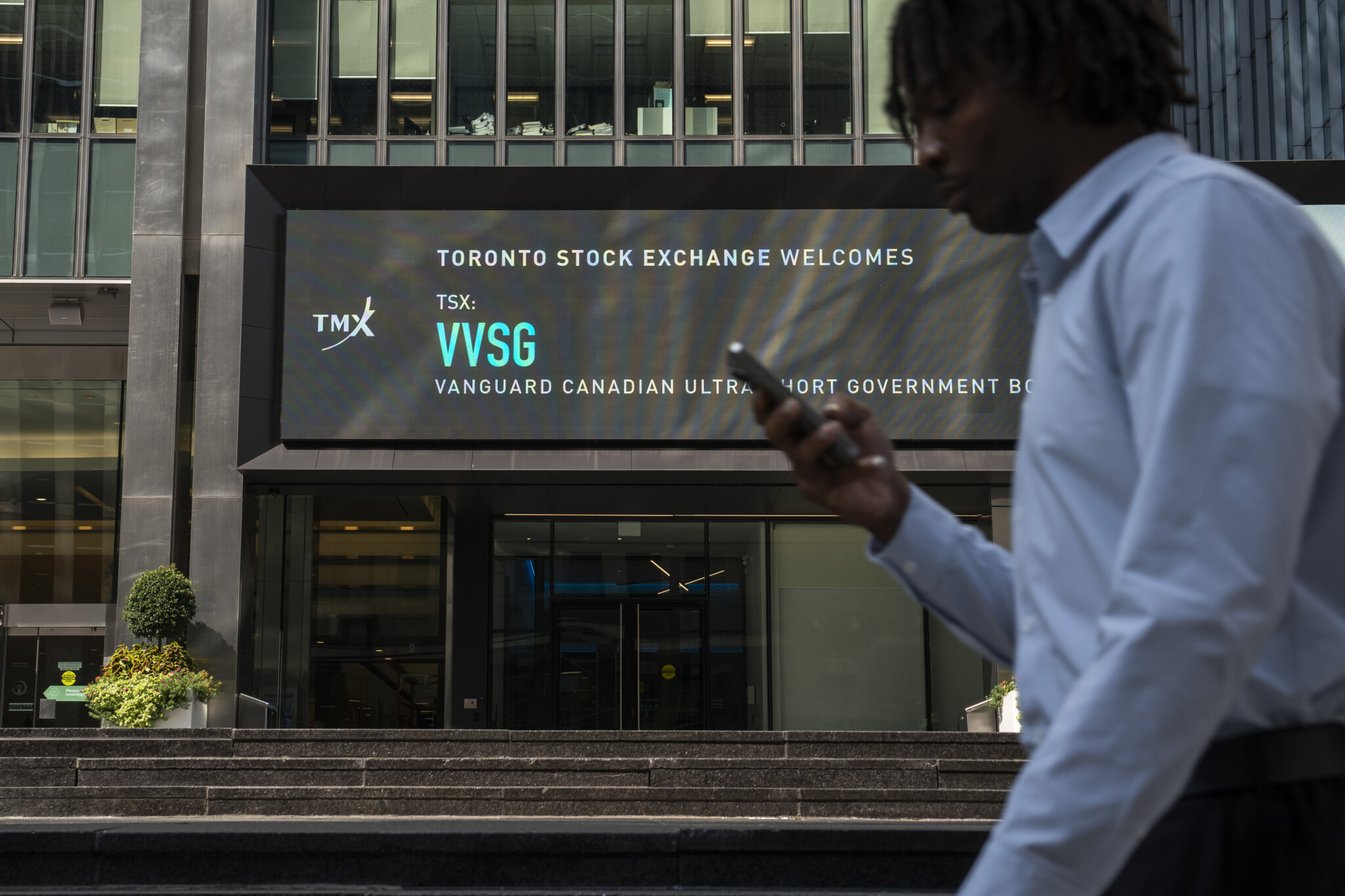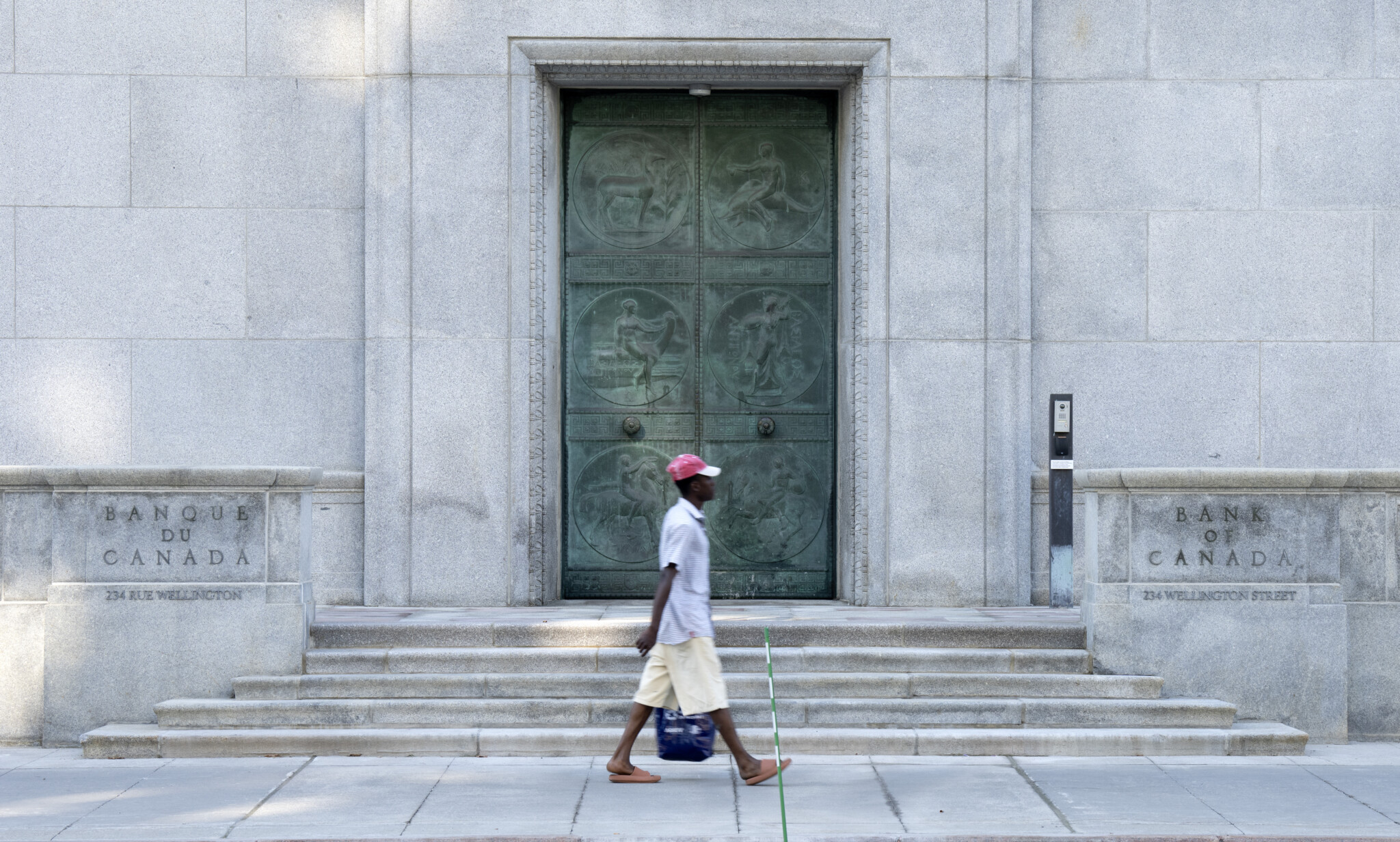Welcome to The Notebook, where each week I’ll share notes on some of the most important economic issues impacting Canada right now. In this edition, I take a closer look at how the global trade war—sparked by a fresh wave of U.S. tariffs—is reshaping Canada’s economic outlook, and what policymakers can realistically do in response.
As global trade wars escalate and markets reel, Canada’s economic outlook has grown so precarious that even a mild recession might end up feeling like a win.
Most of the country’s major banks are projecting some form of downturn over the next six months. Some forecast weak but still positive growth; others see a mild contraction. None, so far, are calling for a deep recession.
The median forecast among bank economists—until recently—was for a modest contraction in the second quarter, followed by a slight rebound in the third. Essentially, a six-month stall. (Growth is expected to return to just over 1 percent next year.)
But those forecasts hinge on two key assumptions:
a) Canada avoids the worst of U.S. tariffs. Most economists are penciling in an effective tariff rate of about 5 percent on Canadian exports—a hit, but still well below the levels facing most other countries.
b) The U.S. avoids a recession.
That second assumption is suddenly in serious doubt—and the landscape is shifting fast.
U.S. recession risks rising
Over the past week, after Trump announced sweeping tariffs on most of America’s trading partners, a bunch of major Wall Street firms have slashed their growth forecasts and warned that a U.S. recession might be coming.Corporate profit expectations are being revised down. Large businesses are going bankrupt at the fastest rate in 15 years, according to S&P Global Market Intelligence.
Jamie Dimon, chief executive of JPMorgan Chase, said a U.S. recession is now a likely outcome. Larry Fink, CEO of BlackRock—the world’s largest asset manager—suggested the U.S. may already be in recession.
As a result, markets are tumbling. Yes, stocks bounced a little after a temporary pause was announced for some countries. But massive tariffs on China—up to 145 percent—are still in place and will continue to weigh on global growth and sentiment.
Perhaps more concerning: investors are selling off longer-dated U.S. government debt, driving up borrowing costs globally even as the global economic outlook has deteriorated. It’s rattled financial markets and raised the risk of a broader selloff in riskier assets. That’s the kind of thing that can lead to a wave of defaults and financial contagion.
How it all plays out is anyone’s guess. It’s all fundamentally unpredictable—there is a wide range of possible outcomes, which makes setting policy around it an extremely difficult task.
Caution first
So, what are the implications for Canadian policymakers?
First, more uncertainty should, all else equal, lead to more cautious policy. If you’re driving in unfamiliar territory without a map, you slow down.
The Bank of Canada has already signaled such a pivot. It meets next Wednesday and has indicated it will focus less on fine-tuning the economy and more on minimizing big risks, like a reemergence of inflationary pressure. It may even temporarily stop producing pinpoint forecasts to emphasize the point.
The message is clear: the Bank may not react immediately to potential economic weakness, because it’s also worried about tariffs fueling inflation. It will remain cautious.
That same cautious approach is also probably appropriate for broader government economic policy, too. But right now, it’s hard to argue that Canadian politicians—busy campaigning—are exhibiting that sort of caution. The platform promises that we’ve heard out there are pretty expensive. Plus, on U.S. trade issues, Canada’s been aggressive in retaliating against American tariffs. That plays well during a campaign. Elbows up, everybody. But countries like Mexico and those in the EU have been far more restrained.
Expect a more measured approach post-election, no matter who wins. Retaliatory tariffs might feel good politically, but they risk deepening the downturn and stoking domestic inflation. And don’t be surprised if deeper integration with the U.S. becomes part of the conversation as well.

Bank of Canada Governor Tiff Macklem listens to an online questino during a news conference, Wednesday, Dec. 11, 2024 in Ottawa. Adrian Wyld/The Canadian Press.
Responding to recession
In addition to uncertainty, there’s a second challenge facing policy makers in this environment: inflation. Tariffs drive up prices. We are going to see inflation become an issue again. And if trade disruptions push costs higher in the short term, then any extra demand—from government stimulus or interest rate cuts—could just stoke more inflation. Which will limit the scope for a response to a recession.
If we are entering into a recession, it would not be a typical recession where you have rising unemployment and weakening inflation. That’s what usually happens during downturns—inflation weakens.
And when inflation weakens, that gives you a lot of scope to provide stimulus. That was the case in the last big recession in 2008-2009, when governments implemented massive stimulus programs to revive the global economy. COVID, however, gave us a cautionary tale of what happens when you provide a lot of stimulus in a supply-constrained economy. You get a lot of inflation.
Right now, we may be entering more of a textbook stagflationary type of environment where we get both slow growth and rising prices. The worst of both worlds.
And it limits what policymakers can do.
Big, sweeping fiscal stimulus—like across-the-board tax cuts or new spending programs—would be risky because they could stoke inflation.
That doesn’t mean governments shouldn’t take any action. Only that the response should be targeted.
Take Ontario and Quebec, for example. They’re getting hit hardest by tariffs on metals and auto production. Much more so than other provinces. That’s where targeted fiscal support—not monetary policy, which is a much more blunt tool—can really make a difference.
In the short term, governments should focus on targeted help for households and firms and regions hurt hard by the trade war. Governments should not be too quick in providing broad-based stimulus.
But of course, if we do see a sharp downturn—if a deep recession starts to emerge—then policy will need to move fast and policy makers will probably need to throw some of that caution out the window, especially if unemployment starts flirting with 8 percent and above. That will include a tolerance for higher inflation if need be.
Building back better
Up until now we’ve been talking about the immediate response.
Longer-term, we’re going to need structural fixes. Things like tax reform, better training programs, public investment, deregulation. That’s the kind of supply-side response politicians are already talking about on the campaign trail.
The challenge is that those tools take time to work. They don’t help much in the heat of a downturn.
And we need to be cautious here, too.
There’s always a temptation in a crisis to try and “transform” the economy. The old “build back better” pitch. But remember: those ambitions during COVID helped fuel inflation and punched a massive hole in our fiscal capacity. And we didn’t get much to show for it.
Policymakers should resist the urge to tie long-term agendas to recession responses. It leads to bad policy and even worse results.
Responding to a recession is already expensive enough.
Typically, a downturn costs the government two to three points of GDP in added debt. Over two years, that could mean anywhere from $120 to $180 billion in new borrowing just to tackle the recession.
Bank of Canada decision
As mentioned, the Bank of Canada announces its latest policy decision on Wednesday. Many economists expect another cut—rates are already down 2.25 percentage points since June.
But there are two reasons why the Bank might hold off on next week’s decision.
One: inflation. Tariffs could drive prices higher, and the Bank may want to wait and see how it all plays out.
Two: the timing. We’re just 12 days away from a federal election. And like it or not, that kind of proximity weighs on a central bank’s decision-making. The last thing they want to do is insert themselves into an election campaign.

A person walks past the TMX Market Centre in Toronto, Wednesday, Sept. 11, 2024. Paige Taylor White/The Canadian Press.
Ontario’s squeeze
Let’s end with a quick word on Ontario and the nation’s housing markets.
While Canada’s overall tariff burden is lighter than others, Ontario and Quebec are bearing the brunt.
Just a quick recap on the tariffs Canada is facing right now. We haven’t been hit by the economy-wide tariffs that Trump has been threatening most other countries with. The tariffs imposed on us have been more sector-specific, in particular targeting our steel, aluminum, and auto exports. These industries are largely based in Ontario and Quebec.
Those two sectors alone employ 126,000 workers in Ontario—nearly one-fifth of manufacturing employment in the province. Quebec has another 33,000 jobs in those industries. Altogether, that’s close to 90 percent of the national total jobs in autos and metals production in the country. Ontario, in other words, is being disproportionately hit.
Now add in other headwinds that are hitting Ontario disproportionately—slowing immigration, a weakening housing market—and you’ve got a recipe for real economic strain.
Bank of Montreal, for instance, thinks Ontario will be the only province to post an outright economic contraction for all of 2025.
Toronto housing
And the latest housing numbers out of Toronto don’t inspire much confidence.
Sales in March fell another 2.4 percent, extending a sharp drop we saw in February. We’re now looking at the lowest level of monthly transactions in over a decade, outside of the pandemic years. In other words, we’re seeing the weakest demand for new homes in Toronto in more than a decade.
Meanwhile, sellers are still listing properties even as demand dries up. Active listings in Toronto last month were up almost 90 percent from a year earlier.
Over in Vancouver, the picture isn’t much better. Sales activity there was down 13 percent year-over-year in March.
So we’ve got slowing sales, rising inventory, and softening demand in the country’s two biggest housing markets—all of it reinforcing the broader weakness we’re starting to see in Canada’s economy.










